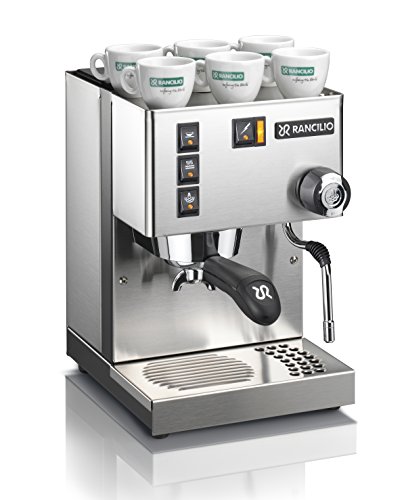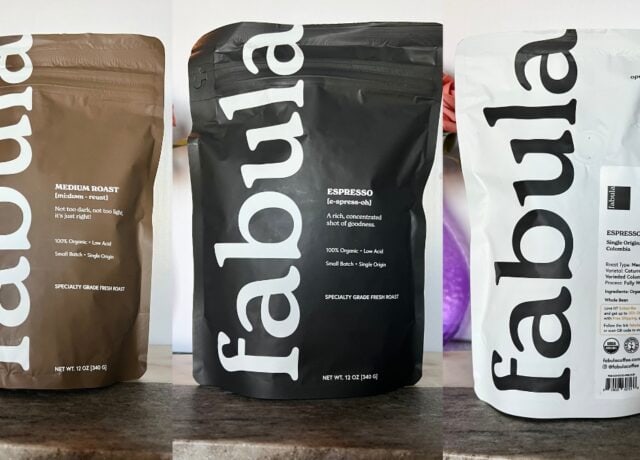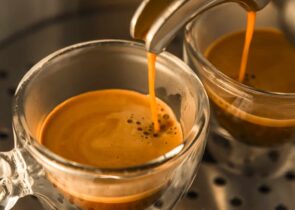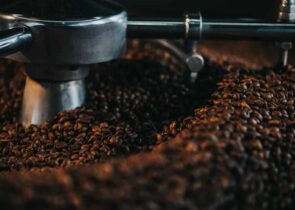Tired of spending hundreds or even thousands of dollars a year at coffee shops? Wanting to save money by brewing your own espresso drinks at home?
Read on to find out why the Gaggia Classic Pro and the Rancilio Silvia are two of the hottest home espresso machines on the market right now, and which is best suited for your brewing needs.
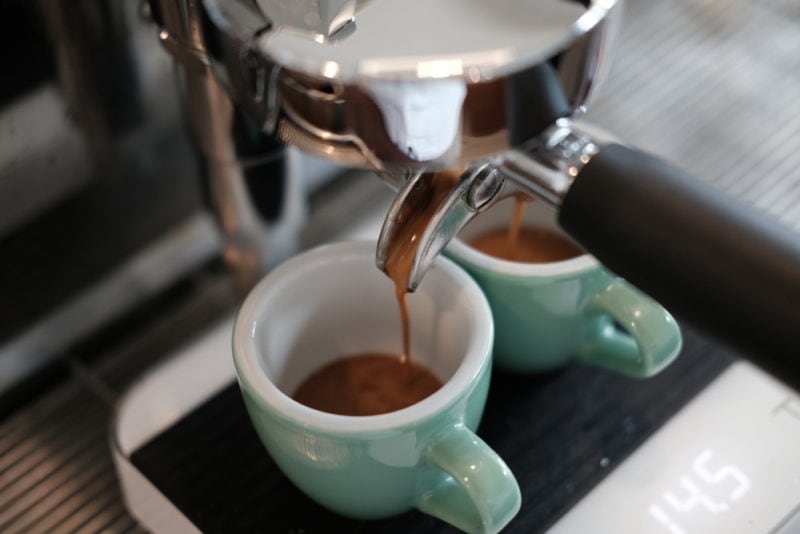
Gaggia in General
Officially founded in 1947, Gaggia is an Italian small appliance company that specializes in coffee and espresso makers. Saeco International Group owns Gaggia, but it has a specialized branch of coffee appliances that differ from Saeco’s products.
Achille Gaggia is responsible for patenting the original, modern steamless espresso machine in 1938. Gaggia pretty much changed the game when it came to espresso, and their machines are largely responsible for the prestige associated with crema.
Most of their products are produced in Milan, but their most popular espresso machine (the Gaggia Classic) is actually made in Romania. After being purchased by Saeco in 1999, they upgraded to stainless steel boilers. They continue to produce some of the best espresso machines available today.
Rancilio Run-Through
Arriving in North America in the 1960s, the Rancilio company began in Italy in 1927 and was founded by Roberto Rancilio. Creating espresso machines for almost a century, Rancilio specializes in bringing high-quality espresso straight to your kitchen.
In the late 1990s, Rancilio began designing commercial-style espresso machines as thank-you gifts for certain vendors and business partners of the company. However, the company eventually decided to release these restaurant-style machines to the public.
Before the Rancilio Silvia, the first machine that Rancilio released was the “La Regina.” Made with a vertical boiler, this machine was the first of a long development of machinery. Eventually, this machine led the way to the innovation of the horizontal boiler machine, paving the way towards a more modern style of machinery.
Gaggia Classic vs Rancilio Silvia
It’s important to note beforehand that both of these machines are machines, not just appliances. They’re sturdy and built to last for the long-term, so when purchasing one it’s important to keep in mind which one best suits your brewing needs.
Both the Classic Pro and the Silvia are semi-automatic espresso machines, which means that they’ll do almost everything for you when pulling an espresso shot. The primary thing you’re still responsible for is stopping the extraction of the shot. This is helpful because it gets the job done, but it also gives you more control over the brewing process.
These two machines both have a lot to offer, and each one will please any beginner or experienced home-barista.
Gaggia Classic Pro Overview
The Gaggia Classic Pro is the updated version of the decades-old original Gaggia Classic. The original machine was well-loved but has been discontinued in favor of this update. But don’t worry, the reboot isn’t anything to fret about! In fact, it completely revamped and improved several features previously found on the Classic.
Things we like:
Made of stainless steel, this machine isn’t only sturdy, it’s designed with the consumer in mind. Constructed with a new pump mount, the Classic Pro’s pump is made to be quieter, making it more pleasant to use since it’s not overly loud or disruptive.
Another wand-erful (sorry, we had to) feature that this upgraded version includes is a swanky new steam wand. With two holes at the bottom of the spout, Gaggia’s new wand makes it easier to get that nice hot foam when steaming milk.
The Classic Pro also has a blow tube that connects to the solenoid valve to relieve water pressure after brewing. After an espresso shot is pulled, the tube dispenses the small amount of water into the drip tray so that it’s easily disposable. This helps clean out any buildup that may accumulate inside the machine.
To complement its efficient design, the Classic Pro also has multiple accessories for its portafilter baskets. Between the choices of double pressurized, double-commercial non-pressurized, and single commercial non-pressurized, there are basket options for both beginning home-baristas and experts.
Things to improve:
Though the Gaggia is exceptional because of its many updated features, it does have a little bit of a learning curve. For those who are new to the home espresso machine, this one could take a little bit to learn the timing and “flow” of its operation. However, it’s still a great choice for those willing to learn.
One common inconvenience is attempting to fit certain cup sizes under the portafilter to extract espresso. Users may find themselves having to carefully arrange and wiggle their cup out from under the basket once their espresso is extracted. However, this problem can be easily maneuvered around.
Though the Gaggia can be easy, it only has limited options to conduct brewing. The buttons are simple, but there’s only three of them, and two options for each one (on/off). This makes it straightforward to use, but it doesn’t offer as much flexibility as other higher-end espresso machines.
Rancilio Silvia Overview
Things we like:
The Silvia has featured many new updates from its ancestors. One of the most prominent is the boiler. The Rancilio Silvia’s boiler is still made of brass, but the inner boiler is made out of stainless steel, unlike the previous copper component. The primary benefit of this is that stainless steel is a little bit more immune to getting burned out.
Unlike the Gaggia, the solenoid valve on the Silvia is tucked inside of the machine. This makes the presentation look more clean-cut, and the excess water automatically drips down into the Silvia’s drip tray after extraction.
As far as stream wands go, the Silvia’s wand does a pretty outstanding job. It’s very flexible, able to be moved both horizontally and vertically. This helps tremendously with milk frothing, giving the barista more control over the creation of the froth and the heating process in general.
Things to improve:
Though it’s been retouched, the primary Achilles heel of the Silvia is the boiler. Despite its durability, the single boiler makes it difficult to control the temperature as quickly as some may prefer. It brews espresso around 200-204 degrees Fahrenheit and steams water at around 280 degrees F. It doesn’t have a separate boiler for steaming, which is a contributing factor to this problem.
There are two ways to tackle this problem. The first is to wait about 30-60 seconds after steaming to let the machine cool down. The second is after steaming your milk, press the espresso button, and let the water run for about 7-10 seconds. This will get rid of water that’s too hot for brewing, and give you less hot water to work with.
One common critique of the Silvia is that its drip tray is too shallow for some baristas. Due to the size, the drip tray can be refilled with excess water from the machine pretty quickly. As a result, the tray must be dumped more often than other machines to avoid spillage.
Feature Comparison
Temperature Surfing
When creating your cup of joe, you’ll quickly realize that the milk-steaming process and the brewing process need two different temperatures to do. Steaming normally needs to be around 212 degrees F while brewing it normally around 200-205 degrees F. So if you steam your milk first, the temperature is too high to start brewing espresso immediately after.
This is where temperature surfing comes in handy. Temperature surfing is a technique to help navigate this fluctuation and gain better control over the brewing and steaming processes. A quality espresso machine needs to be able to drift between these two temperature ranges efficiently.
The Classic Pro does have a little bit of a reputation for not being super consistent with its brewing temperatures, so temperature surfing with this machine is important to know. Without managing the temperature, you’ll be pulling shots at different temperatures as the Classic Pro warms up to brew, creating different tastes in the shots.
You can control temperature surfing on the Gaggia by turning on the steam wand for a few seconds as the machine is warmed up and you’re about to pull your shot. This will help the boiler cool down slightly to reach its ideal temperature to extract the espresso shot.
The Silvia has about a 15-20 degree F difference in brewing range, so temperature surfing is often important. You can achieve this by just turning the brewing button to “on,” run it for about 3 seconds to begin pulling hot water into the boiler and wait for the orange light to come on. About 30 seconds after this, the light should turn off, and the Silvia has reached its optimum temperature for brewing (about 204 degrees).
Steam Wands
Both machines do have dependable steam wands. However, each one has different characteristics when it comes to frothing milk.
The Classic Pro’s wand heats milk to a toasty temperature and also creates frothy, thick foam as well. With its innovative manual design, it allows you to have more control over the steaming process, allowing you to manipulate the frothing as much as you need.
The Silvia has also a commercial wand, making the process of heating and frothing milk more of a manual process as well. Where flexibility is concerned, the Silvia is unmatchable. However, the Silvia’s steam wand does only have one hole, which can make frothing milk to a little bit more challenging.
Boilers
As far as boilers are concerned there are several significant differences between these two machines. Weighing 3.5-ounces, the Classic Pro’s aluminum boiler has a maximum wattage of 1370.
Aluminum is beneficial due to its resistance to corrosion. It’s lightweight and is inexpensive to produce, making it an ideal material for small espresso machines like the Classic Pro. With the Gaggia’s boiler having a lower volume and higher wattage, it’s able to bounce back quickly to make another brew after a shot is pulled.
Unlike the Classic Pro, the 12 ounces Silvia is made from brass and has a total wattage of 952. However, Silvia’s boiler packs quite a punch when it comes to steaming power, allowing it to make several drinks back to back.
ESE Pod Brewing
Fully named Easy Serving Espresso Pods, these handy-dandy gadgets are packed coffee pods stuffed with about 7 grams of coffee. With a paper pocket that’s 44mm in diameter, they’re efficient for many who don’t have a grinder for their coffee. They’re compatible for most espresso machines who have adapters or portafilter accessories for ESE pods.
ESE pods are efficient because their only requirement is being placed into the portafilter. Normally, ESE compatible machines have a basket-accessory for this method of brewing.
The Gaggia’s portafilter does come with a single-shot pressurized basket for ESE pod brewing. This is beneficial for those who are looking for a quick and efficient strategy for making espresso with a Gaggia.
Unfortunately, the Silvia must be customized to brew with ESE pods. Unlike the Gaggia, it doesn’t come with a portafilter basket for ESE brewing. However, there are some adapter kits available for the Silvia that are easy and affordable to install.
Wrapping Up
At the end of the day, both of these home espresso machines are durable, dependable, and perform wonderfully.
However, it’s important to keep in mind that these machines are most beneficial for beginner/intermediate level baristas. They’re great learning and training tools, but they might take some practice and dedication to learn how to operate. Regardless, both are excellent, high-quality additions to any coffee lover’s kitchen.


